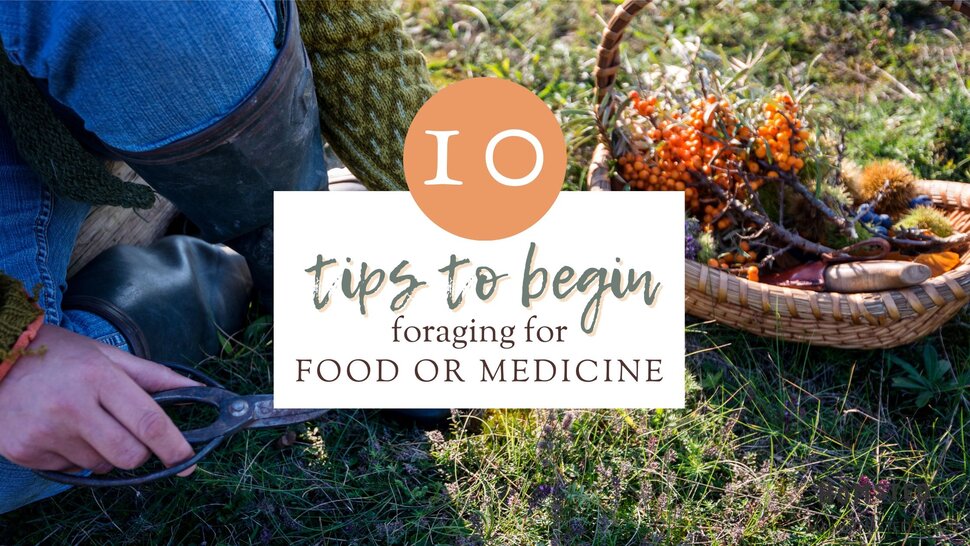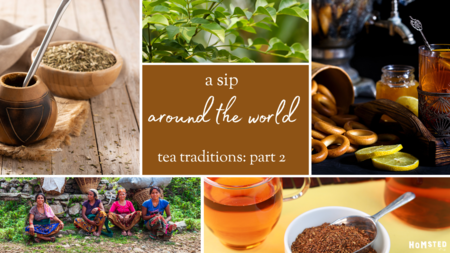10 Tips to Begin Foraging for Food or Medicine
07 Aug 2023

Foraging for food and medicine is a great way to connect with the outdoors. Foraged foods are typically rich in vitamins, minerals and health benefits. Whether you want to forage for your food source or as a hobby, there are some important things to consider.
- Proper identification. Be 100% sure it is not poisonous. Find a mentor and get good books. I had a teacher once say before you go out on your own and consume a plant, you will need to properly identify this plant with a teacher at least 10 times before you yourself can start using it. It is a great reminder that taking many classes from many teachers is always a plus. One time I came across a plant identification book and it had the same picture for osha and poison hemlock. One plant that is safe and one that is poisonous. A big whoops. So please refer to many books and take many classes before you go out on your own. Some of our favorite foraging books are Backyard Foraging, Mountain States Foraging, How to Forage Mushrooms without Dying and Forage, Harvest, Feast.
- Be aware of possible allergies. The first time you try a new food outdoors or from a grocery store it is best to first try in small amounts. This way if you find out you have a sensitivity or allergy it will be minimal. A small taste of something might be disagreeable but a bunch could be serious. If you know you are allergic to some foods you might want to stay away from those foods from the same plant family. For example the sumac plant comes from the same family as mangos and cashews.
- Learn the habitat of plants. Example: you won't find cattails on top of a mountain or you won’t find elderberries in an open desert. If you are using a generic foraging book it might be a challenge finding a plant that is listed in the book but does not grow in your area.
- Learn companion plants. Learn which plants grow next to each other. This is a great tool for properly identifying a plant. Out west we use it a ton because some plants grow only at certain elevations. So if you are unsure of your elevation you can identify the plants around you and get a pretty good idea of the range you are looking in. For those trickier plants to identify this can come in handy.
- Get permission to forage. Whether it is on public or private land it is always a good idea to get permission. Forest service, BLM, state parks or private land might need permits.
- Avoid foraging rare plants. Example: American ginseng, goldenseal, osha are all being over harvested. If you are unsure which plants are being over harvested, check out United Plant Savers. They have a list of at-risk species plants.
- Learn which parts of the plant are edible. Sometimes a part of a plant is edible but other parts are not. For example elderberries are safe but the bark and seed are not.
- Avoid contaminated areas with heavy metals from toxic exhaust or sprayed with pesticides. Know the water source, especially when foraging water plants (e.g. cattail, horsetail) because chemical and heavy metal pollution are concerns. If you are harvesting in a park (with permission, of course) be sure you inquire about it’s spraying policy. One summer we were hired by a local state park to take students into the forest and teach about foraging. Before the class, we walked along a path and found a plethora of plants we were going to talk about. On our way back from scouting, someone was walking nearby with a big pink tank on his back spraying the heck out of the plants. It really caught us by surprise. We had to go back and verify the locations they didn’t spray in the park before we taught our class. If you are picking in your own backyard, then be aware if you live next to a park, golf course, or agricultural fields as it may be susceptible to the herbicides and pesticides.
- Don't over harvest. This means different things for different plants. Some plants can be severely weakened if you strip off a piece of its bark, if a couple leaves are picked or a root is harvested. A general rule of thumb is to not collect more than 10% of the actual plant or the amount of plants within an area. Berries and nuts are a very important source for wildlife, so if you take their food they could be stressed to get themselves through the winter.
- Only use plants that appear to be healthy. If the plant is wilting, has black spots or looks unhealthy, then avoid it. This could be a sign of poisoning, infestation or some other cause.
We hope this is a great starting point into your foraging adventures. Please remember proper identification is key. If you don’t know, don’t eat!





Comments
I LOVE Rosemary Gladstar! In fact her Home Remedies was one of my first ever herbal book. It suits all levels and is very easy to follow and learn from.